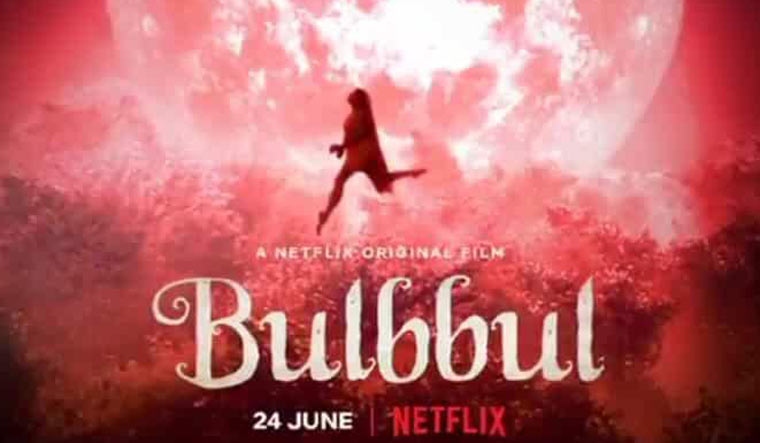Chirping birds, trees and aalta-coloured feet swinging from a tree-top, with soulful music by Amit Trivedi in the background–that is the opening visual of Bulbbul, a film set in the 1881 Bengal Presidency. The directorial debut of lyricist and dialogue writer Anvita Dutt, Bulbbul, releasing on Netflix on June 24, is a supernatural thriller at the outset. But go deeper, and it turns out to be an emphatic dissection of the deep-rooted patriarchy and misogyny.
In one heart-wrenching scene in the film, there is an interaction between two women (Tripti Dimri as Bulbbul and Paoli Dam as Binodini) – sisters-in-law – married into a family of thakurs as kids to men much older to them. It is haunting because it speaks of the reality of how women are often lured into marriage on the promise of materialistic pleasures. It is real because even after 200 years from the period in which the movie is set, the struggles seem relatable. The title of the film may focus on just one woman, but it wisely creates a dichotomy by placing two women in the same situation – one that couldn’t rise above the tragedy and the other who uses her tragedy to reclaim her position.
After spending 15 years in advertising as a copywriter, 48-year-old Dutt turned to writing films after a chance meeting with Aditya Chopra, the Yash Raj Films scion. It was a new journey–writing films and song lyrics–that began with Neal ‘n’ Nikki (2005), followed by many films including Tees Maar Khan, Patiala House, Queen, Pari, and Phillauri among others. While some of the projects she has been a part of reveal a lot about the person that Dutt is, most can easily be bracketed into the mainstream, masala films. It is because of that that Bulbbul seems like a huge departure.
“Yes, I have worked into what you call the commercial zone of films. But it was a lot of fun,” says Anvita, adding that everything she has learnt over the years has helped her be the person and the director she is today. “When you have lived the years that I have lived in this world, the way it is and the way it functions, the issues that cloud it, you will be moved and affected by it. Those are things that bother you and they will seep into your stories if you are telling a story. Even if it is a fairy tale, it will have that messaging coded deep into it without being obvious about it. The works I wrote earlier was for other directors, but eventually when I decided to write my story for my film, it was going to be the one that I want to tell. That is why the difference.”
Dutt’s years of interest in fantasy fiction have been influential in writing the story. She was five when her maternal aunt gave her the Claypot And Other Stories. It was followed with Masha And The Bear, the character of Baba Yaga fascinated her a lot. “I was just so thrilled with it. My fascination for fantasy started there.” The hunger for stories was so deep that she challenged herself in finishing the entire library of the Air Force cantonments when every two years her father got transferred. “I read everything without filter.”
It was at 21, however, when she picked up her first Stephen King-Peter Straub’s The Talisman. The next day, she says, she strangely went looking for more books by King “and not Straub”, something she is still amazed by. It led her to the world of fantasy – from Ursula K. Le Guin to Neil Gaiman, she finished it all. Then, there is a strong influence of the Bengali culture and literature. Rabindranath Tagore’s evocative women characters have always appealed to Dutt. May be that is the reason that the film spins around the relationship Bulbbul has with her brother-in-law, Satya (Avinash Tiwari) – drawing from Tagore’s relationship with his sister-in-law, Kadambari Devi.
Dutt’s fascination with Bengal doesn’t end there. “There is also a lot of beauty in Bengal. I am moved by anything that is aesthetically done and in Bengal you find such sublime beauty,” she says. It is not a surprise then that the film’s aesthetic – bright and lit – draws from the paintings of Raja Ravi Varma and Michelangelo Merisi da Caravaggio, an intentional move. When she shared with cinematographer Sidharth Diwan that she wants a blood moon, he immediately agreed. It was not just a visual effect that they wanted to achieve with that. Instead, the visual becomes a deeply thought message of the awfulness that unfolds on the screen of total eclipse.



